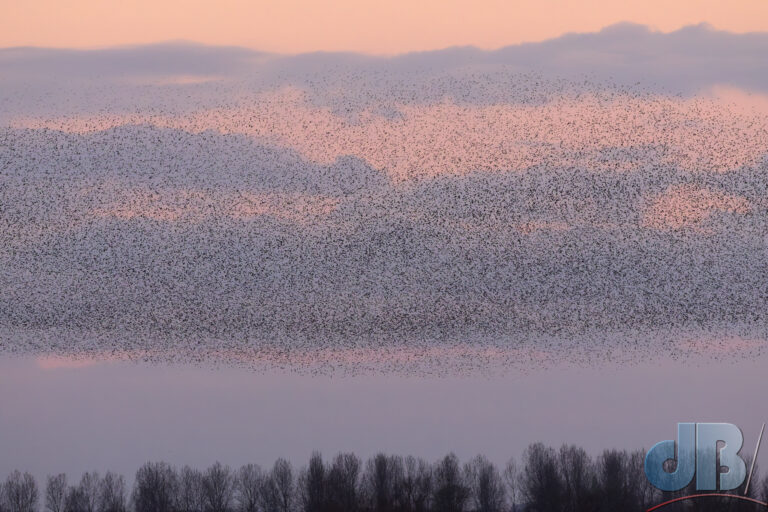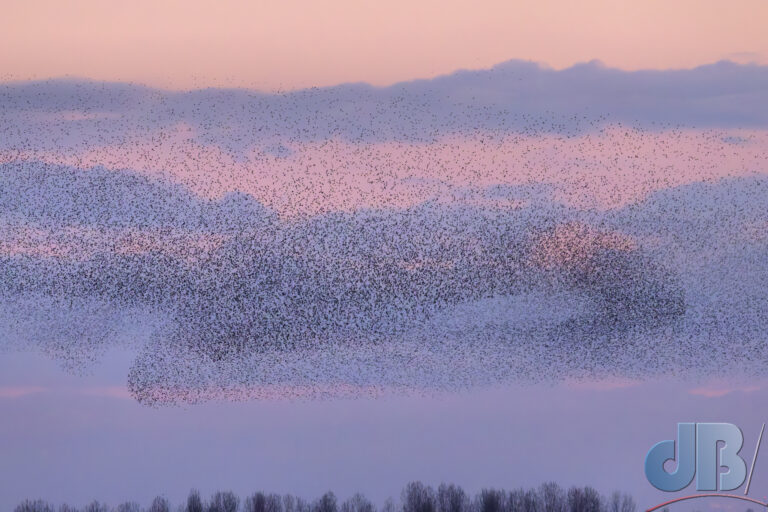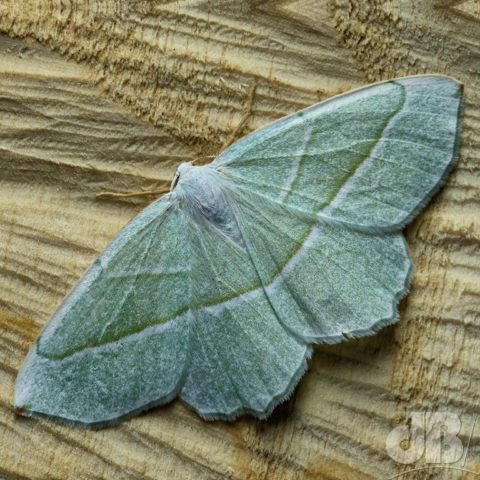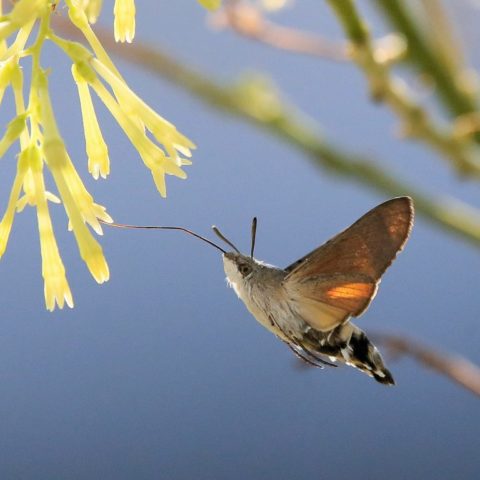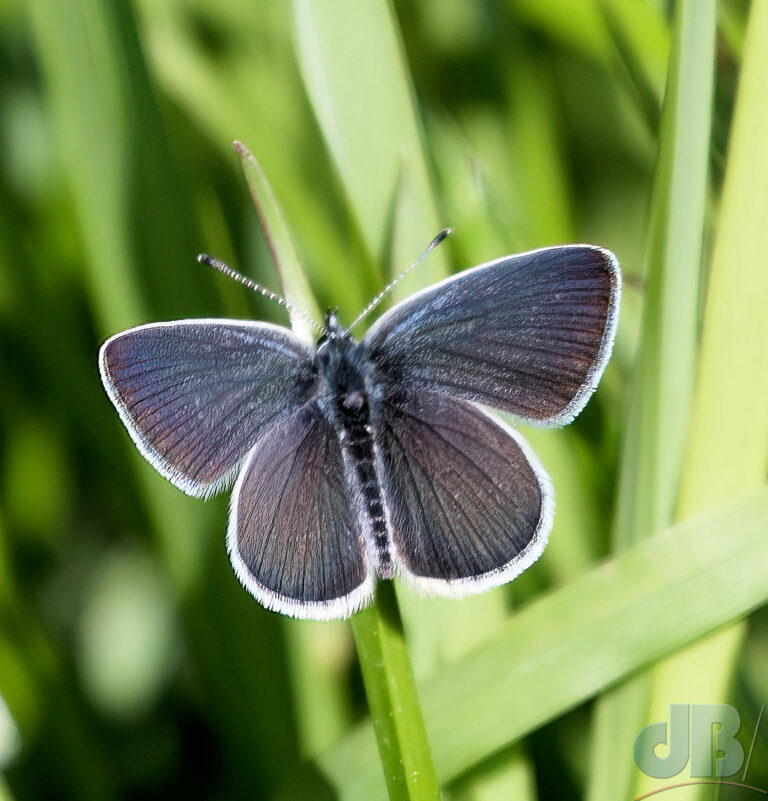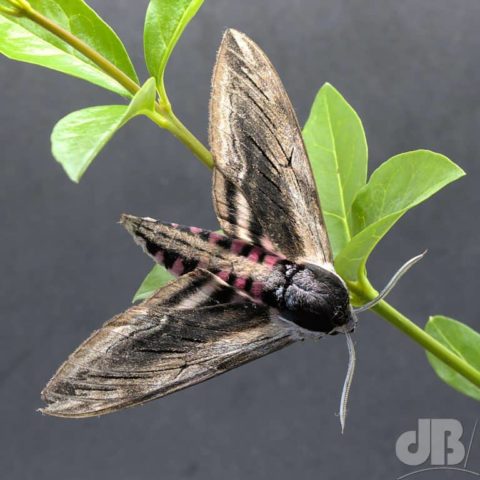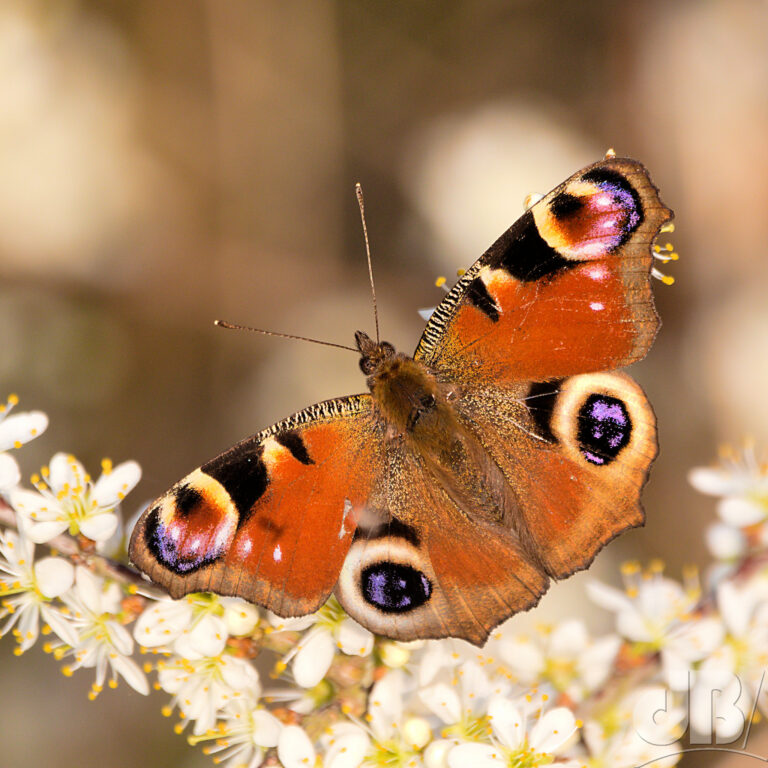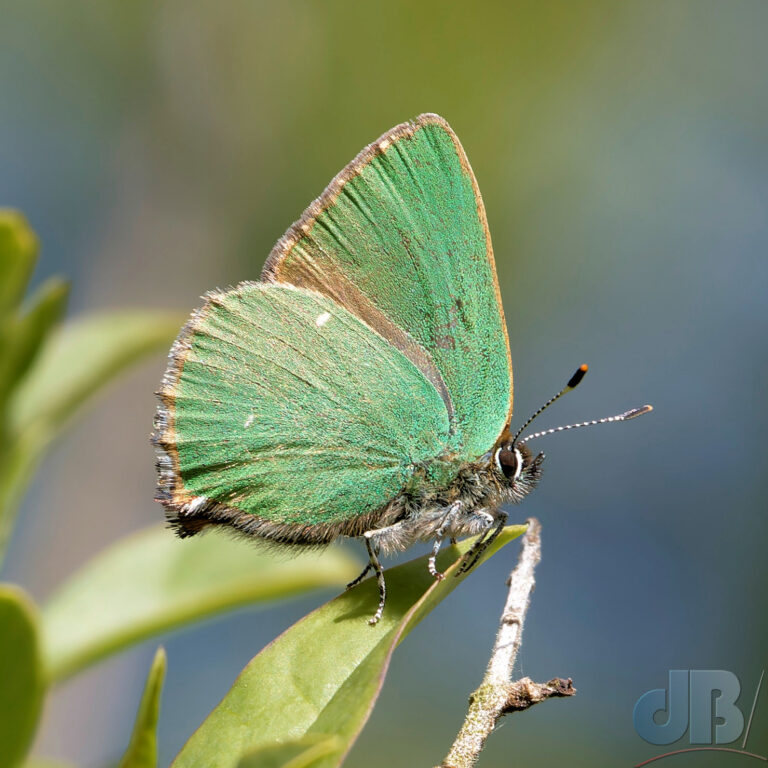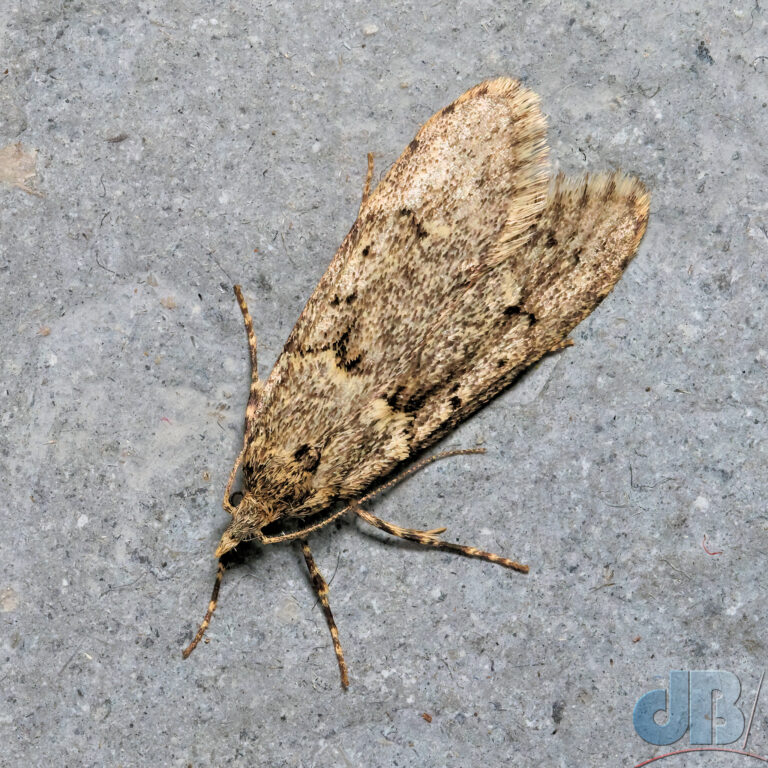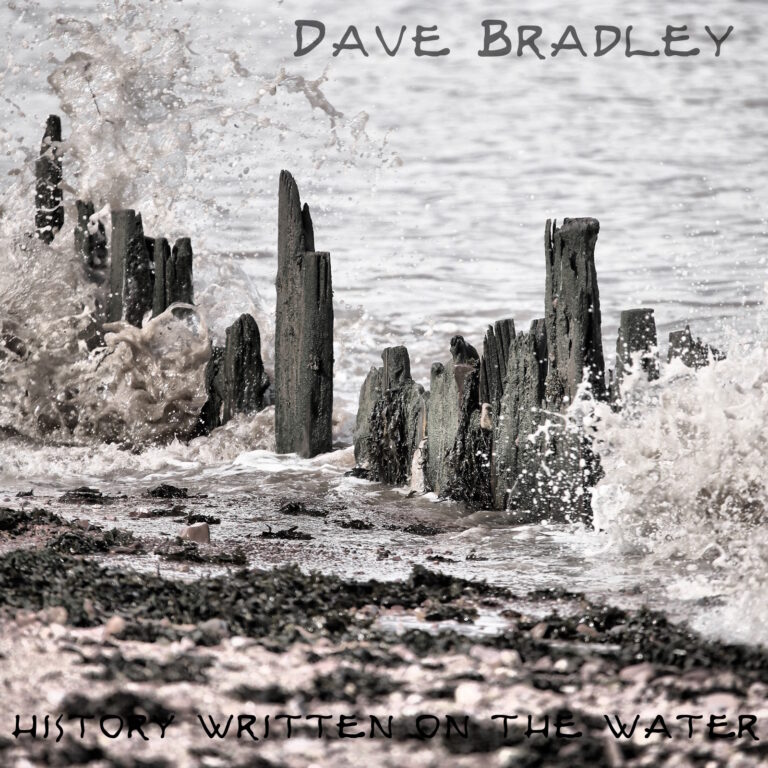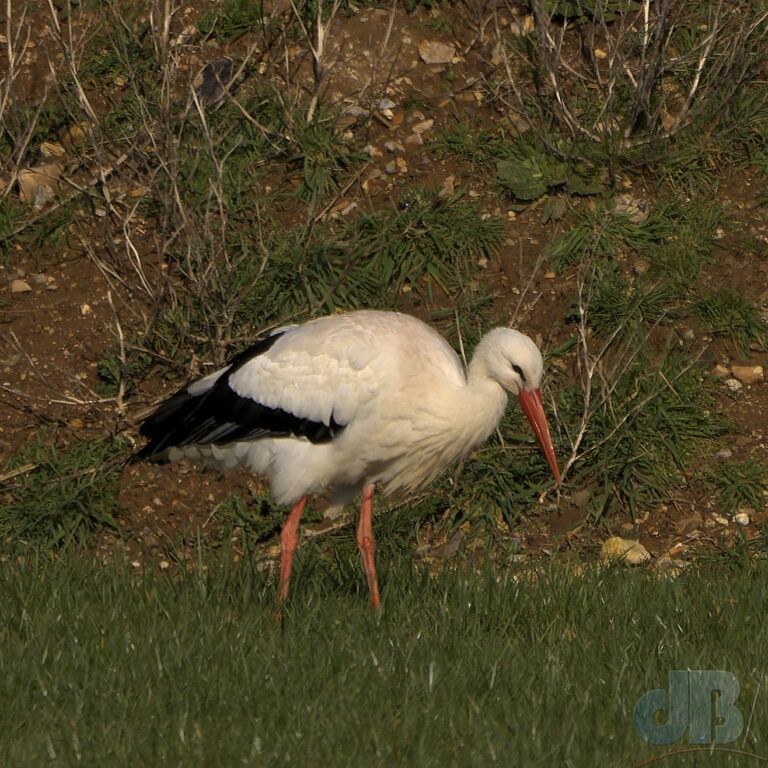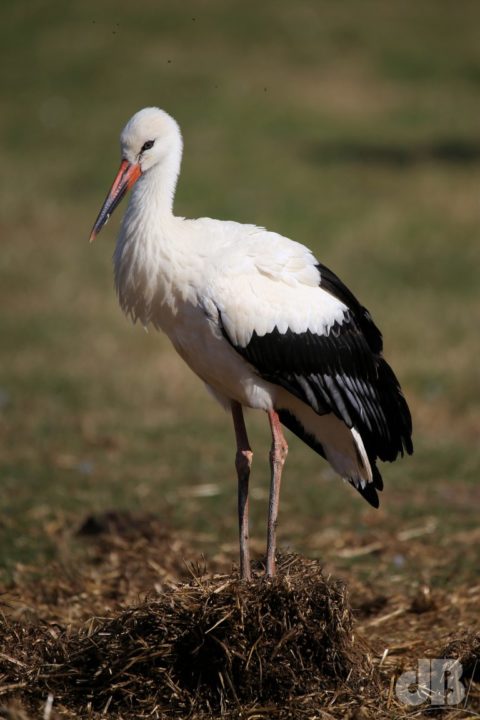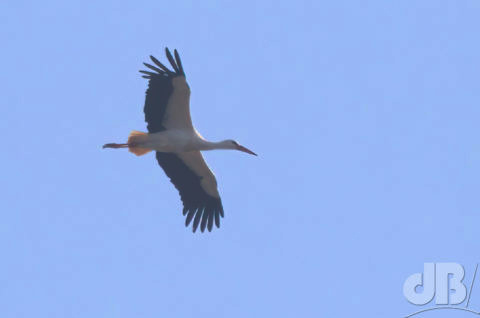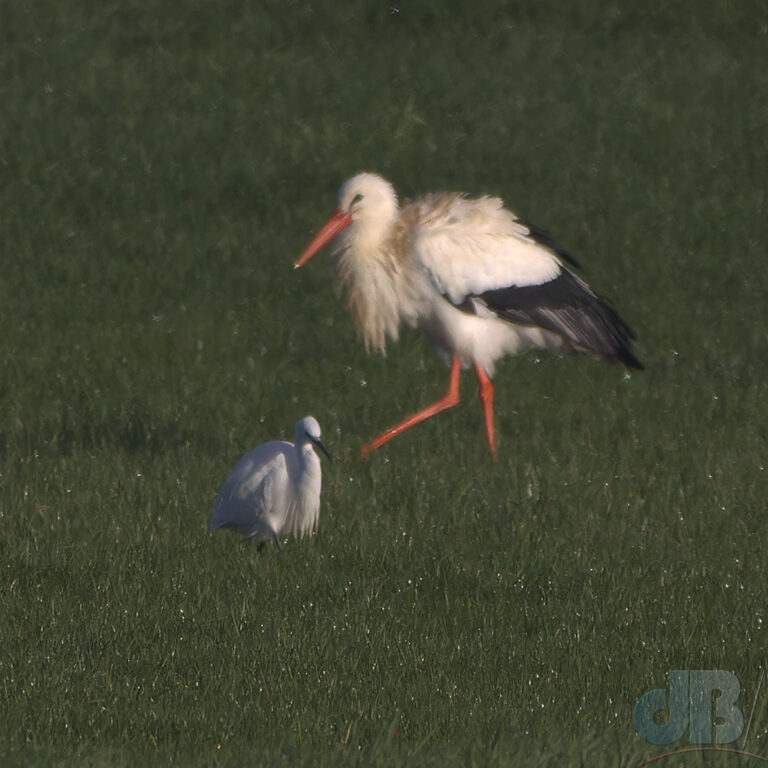UPDATE: I mentioned the murmurations to a choir friend, Sara, and bumped into her and her husband on the Fen. I warned them that, because it was very windy, we might not get such good murmurations as I’d mentioned before. But amazingly, as dusk rolled on, even though it wasn’t a bright sunset, we got some wonderful activity from a staggering half a million Starlings.
I chunk estimated numbers from my photos and the video at perhaps 400,000. However, I then fed some photos and video stills to Google Gemini AI and asked it to process, analyse, and count the birds. Gemini estimated the size of the flock in my video from a still capture as being 500,000. There were many more birds outside the video frame, so I suspect on this evening there were between 550,000 and 650,000 birds murmurating. ChatGPT got similar numbers from my photos. Microsoft Copilot simply told me the images were of murmurations and said it was too difficult to count the number of birds.
The main activity was very much over the reedbeds among which we stood rather than being half a mile away as occurred on my previous two visits. This made it hard to get the full murmuration in the camera frame at the level of zoom I had with me. So, the above video was done on my phone as a record.
The birds would whoosh over out heads at about 50 metres altitude. I warned the people around me not to look up with their mouths open and within a few minutes, my choir friend had undergone a full birding initiation with three deposits from above in quick succession. Amazing that I didn’t get splashed as I was standing only a metre or two away from her.
Anyway, the birds gathered in a very dense flock at about 17h50 and bedded down into the vast reedbed in front of the entrance to the reserve. There were undulations for a good ten minutes as it got darker and darker. At one point, a Merlin was reported to have caught one Starling on the wing. The other 199,999 were fine and had roosted down among the reeds by the time we departed.
At the end of February, I got wind of there being very large numbers of Common Starling murmurating at a local nature reserve – RSPB Ouse Fen (Earith). I got a few photos on an evening visit. There were probably half a million birds, it was quite astonishing. I based my estimate on counts I’ve done of photographs of smaller flocks and extrapolating to the huge patches of sky that were covered with birds on the evening.
I got some nice photos at sunset but my phone video was very smeary and low-res. So, a second visit was essential. Unfortunately, rumour had it that the numbers the next night were smaller, that some of the birds had moved to roosting over the Over side of RSPB Ouse Fen…nevertheless, Mrs Sciencebase and myself headed over to Earith on 3rd March.
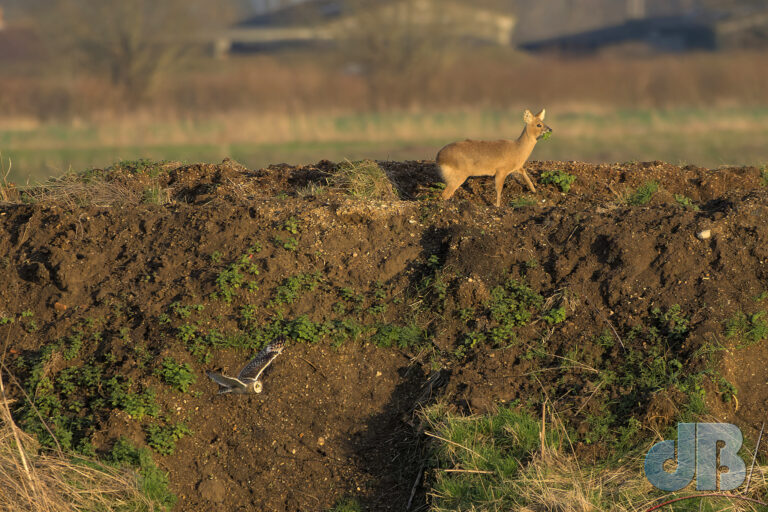
It was a much better evening and definitey fewer Starlings, but still many tens of thousands. This time I got some decent video footage of the murmurations.
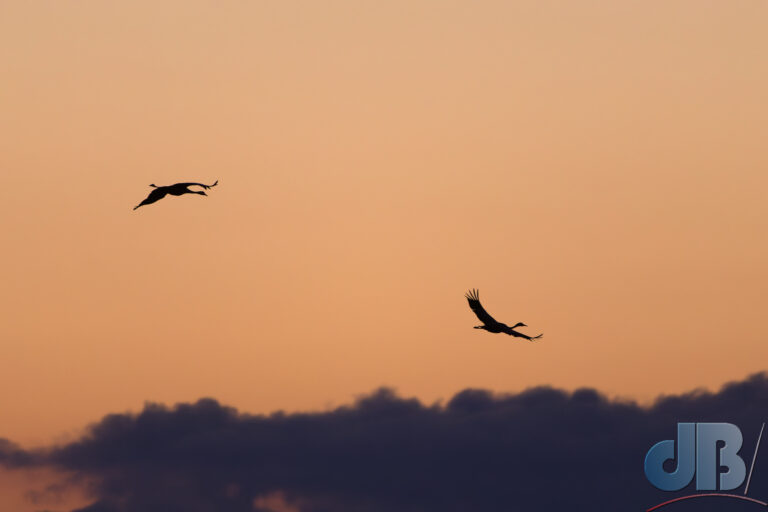
We also ticked three Short-eared Owls, half a dozen Chinese Water Deer, heard numerous Cetti’s Warbler and saw just one, saw Great White Egret and Grey Heron, heard a couple of Bearded Reedling, and heard one or two booming Bitterns, lots of Geese, Cormorants, Reed Bunting, Widgeon calling, Little Grebe, Water Rail etc. The Cranes that had been displaying south of the car park on the gravel works land flew in to roost about a quarter of a mile in front of us as we watched the starling murmurations. It was a wonderful evening of nature watching.
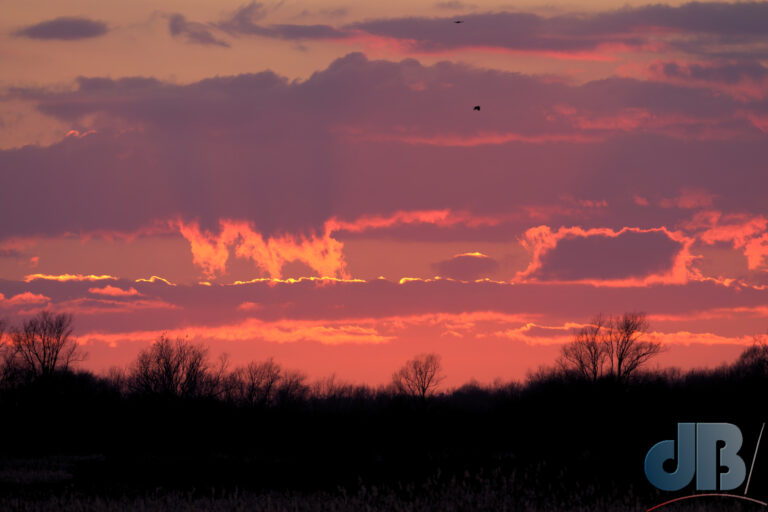
I played my video to the Merlin app, although we all knew what birds we could hear, but it came back with Coot, Greylag Goose, Canada Goose, Cetti’s Warbler, Ring-necked Pheasant. It didn’t pick up Wigeon, Little Grebe, Reed Bunting, Bearded Reedling, which we had heard.
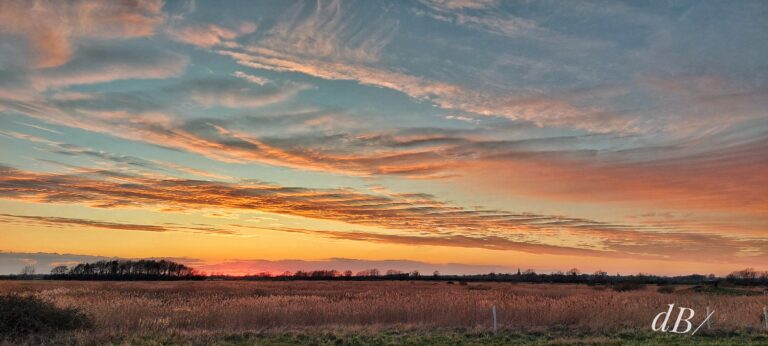
I opened up one of my stills with a huge flock across it and enlarged it on my laptop screen. I drew a square around a patch that I estimated had 100 birds in it. Double-checked and adjusted the size of the square to make sure it was very close to 100. I measured the square in pixels and then worked out how many such squares would fill the area of the photo filled with birds. It came to about 75000 birds. This assumes average density across the photo. There were probably areas outside the area of the photo that would be around 25000 birds. So, the biggest flock would be around 100000, there were probably about half the same number of birds in the air elsewhere. The previous evening of murmurations I’d have said there were 5-6 such flocks, so guesstimating at least half a million birds going to roost on this patch of the reserve.
